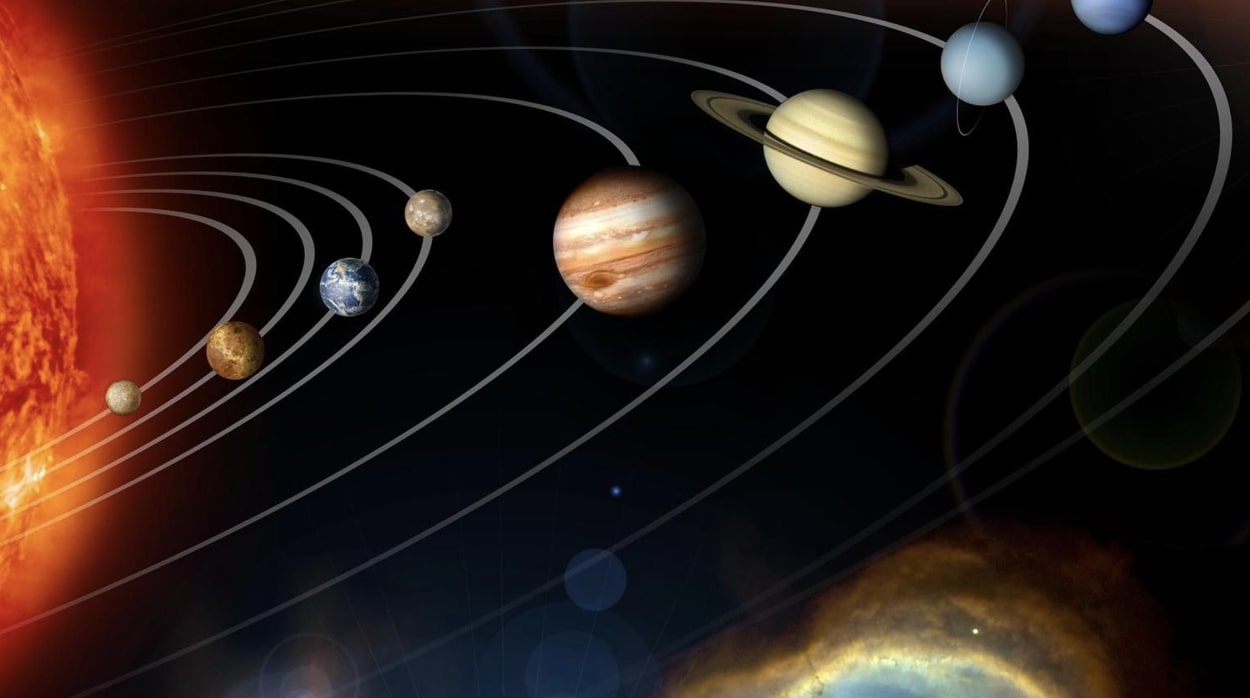Dark Energy is inferred based upon distance and other measurements which could have 10% errors. Measurements of the distance to extragalactic sources allow us to infer the major energy constituents of our Universe. Two decades ago such measurements revealed that most of the energy in the Universe is in `dark energy’ — a discovery that has had immense implications for fundamental physics. Currently there is a 10% discrepancy in cosmic distances inferred with the two most accepted techniques, despite 1-2% errors claimed on both methods.
Astronomical sciences needs more precise measurement. Such a measurement could also lead to entirely new discoveries.
Placing Satellites on Opposite Ends of the Solar System for Super Precise Measurements
A Solar System-Scale VLBI (Very Long Baseline Interferometer) would dramatically improve cosmological distance measurements.
An experiment was proposed by Boone and McQuinn 2023 that has the potential to improve current constraints by an order of magnitude or more. This experiment is ambitious, involving placing satellites on other sides of the Solar System to constrain cosmic distances by timing the arrival of fast radio bursts to measure the curvature of their electromagnetic wavefront. This idea builds off the technology that underlies the tremendous successes of global navigation satellite systems and very long baseline interferometry. However, the initial calculations for this idea can be significantly improved. The proposed work would investigate and simulate different mission concepts to firm up the specifications needed for transformative cosmology constraints and evaluate the space readiness of this concept.
Additionally, this mission concept could precisely measure the mass distribution in the outer Solar System, detect micro-Hertz gravitational waves (which are not targeted by other gravitational wave observatories), constrain dark matter models, and resolve pulsar magnetospheres to distinguish between pulsar emission models. This proposal would also develop the cases for these potential ancillary applications.

Brian Wang is a Futurist Thought Leader and a popular Science blogger with 1 million readers per month. His blog Nextbigfuture.com is ranked #1 Science News Blog. It covers many disruptive technology and trends including Space, Robotics, Artificial Intelligence, Medicine, Anti-aging Biotechnology, and Nanotechnology.
Known for identifying cutting edge technologies, he is currently a Co-Founder of a startup and fundraiser for high potential early-stage companies. He is the Head of Research for Allocations for deep technology investments and an Angel Investor at Space Angels.
A frequent speaker at corporations, he has been a TEDx speaker, a Singularity University speaker and guest at numerous interviews for radio and podcasts. He is open to public speaking and advising engagements.

